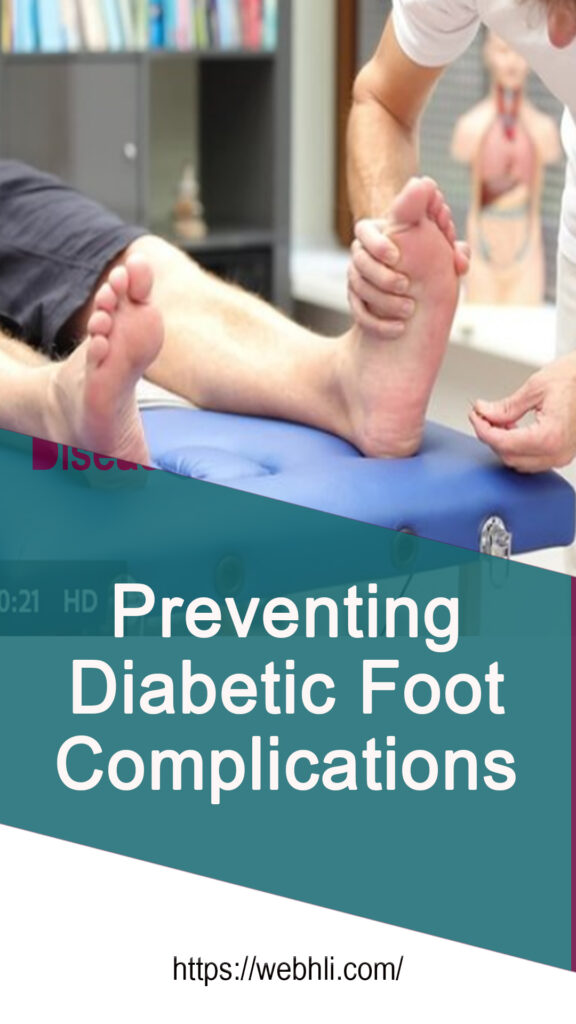
Diabetes demands vigilant attention to many aspects of health, including foot care. For individuals living with diabetes, foot complications can pose serious risks, potentially leading to infections, ulcers, and even amputation if not managed properly. However, with proactive measures and informed practices, it's possible to significantly reduce the likelihood of diabetic foot complications. This article explores essential strategies and habits for preventing such complications, empowering individuals with diabetes to take charge of their foot health and overall well-being.
Check out these related articles, too:
What You Should Look Out For For Kidney Failure Symptoms?
Kidney Failure Treatment Without Dialysis
Kidney Diet Secrets That Can Reverse Chronic Kidney Failure
The Effects of High Potassium For Kidney
What Is A Healthy Kidney Diet Plan
Diet Tips For People With Diabetes and Kidney Disease
Are Renal Insufficiency And Kidney Failure The Same Thing
5 Natural Supplements For Chronic Kidney Disease
Bitter Melon Recipe For Diabetes
Understanding Diabetic Foot Complications: Diabetic foot complications primarily arise from two main factors: neuropathy and poor circulation. Neuropathy, or nerve damage, diminishes sensation in the feet, making it difficult to detect injuries or discomfort. Concurrently, diabetes can impair circulation, reducing blood flow to the feet and slowing down the healing process. Together, these factors increase the vulnerability of individuals with diabetes to foot problems, including infections, ulcers, and deformities.
Key Strategies for Prevention:
- Daily Foot Checks: Regularly inspecting the feet for any signs of redness, swelling, blisters, cuts, or sores is crucial. Since neuropathy can diminish sensation, visual inspection becomes even more important for early detection of any issues.
- Proper Foot Hygiene: Keeping the feet clean and dry helps prevent infections. Washing with mild soap and lukewarm water, followed by thorough drying, especially between the toes, can ward off bacterial and fungal growth.
- Moisturizing: Moisturizing the feet with a gentle, fragrance-free lotion or cream helps prevent dryness and cracking, reducing the risk of skin breakdown.
- Choosing Appropriate Footwear: Opt for well-fitting shoes made of breathable materials to minimize friction and pressure. Avoid high heels and shoes with narrow toe boxes, as they can increase the risk of corns, calluses, and ulcers.
- Regular Foot Exams: Routine foot exams by a healthcare professional, preferably a podiatrist, can identify potential issues early on. They can assess circulation, sensation, and foot structure, providing valuable insights into preventive measures tailored to individual needs.
- Blood Sugar Management: Maintaining stable blood sugar levels within the target range prescribed by a healthcare provider is vital for overall health and can significantly reduce the risk of diabetic complications, including those affecting the feet.
- Avoiding Barefoot Walking: Protecting the feet from potential injuries by wearing shoes or slippers indoors and outdoors is essential. Even minor cuts or abrasions can lead to serious complications in individuals with diabetes.
- Regular Exercise: Engaging in regular physical activity improves circulation and helps control blood sugar levels. However, individuals should choose activities that are gentle on the feet and wear appropriate footwear.
- Smoking Cessation: Smoking impairs circulation and can exacerbate existing foot problems. Quitting smoking can significantly improve circulation and overall health, reducing the risk of diabetic foot complications.
- Seeking Prompt Medical Attention: Any signs of infection, injury, or non-healing wounds should prompt immediate medical attention. Timely intervention can prevent minor issues from escalating into serious complications.
Conclusion: Preventing diabetic foot complications requires a proactive approach that encompasses daily self-care practices, regular monitoring, and collaboration with healthcare professionals. By adopting these preventive strategies and making foot health a priority, individuals with diabetes can minimize the risk of complications, preserve mobility, and enjoy a better quality of life. Remember, every step taken towards foot health is a stride towards overall well-being.



 Protected by Patchstack
Protected by Patchstack